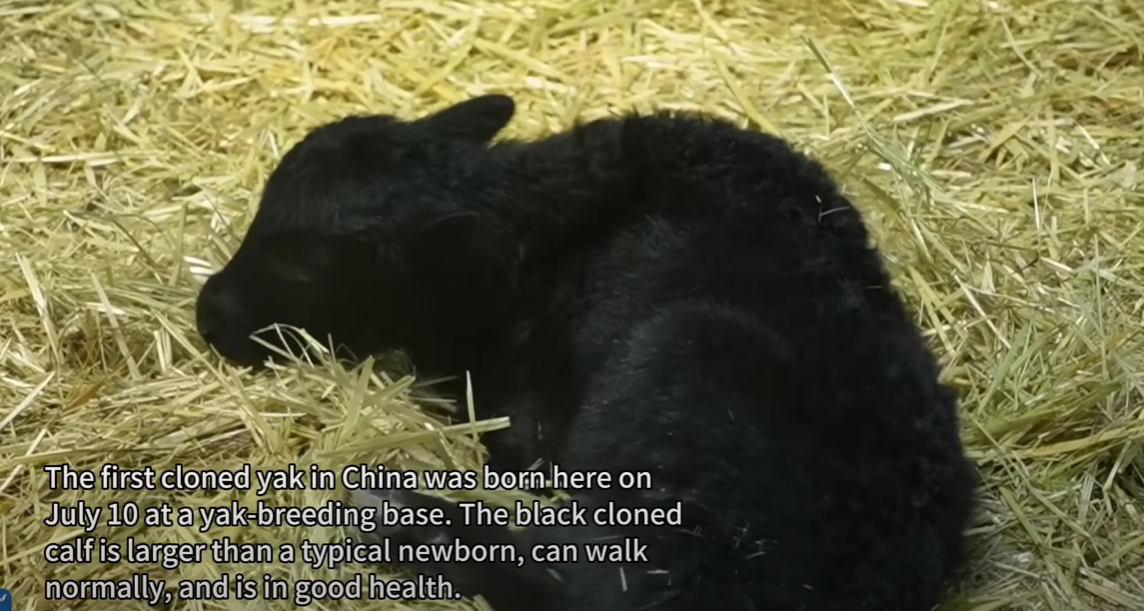
In a historic milestone for both biotechnology and sustainable development, Chinese scientists have achieved the world’s first successful cloning of a yak—a species integral to the survival, economy, and culture of the Tibetan Plateau. The birth of the cloned calf in Damxung County, Tibet, marks the dawn of a new era in livestock breeding technology, combining advanced genetic selection with somatic cell nuclear transfer (SCNT). This fusion not only promises dramatic improvements in animal productivity and resilience but also addresses specific regional challenges unique to high-altitude environments.
This article delves deeply into this achievement, explores its scientific underpinnings, profiles the importance of yaks on the plateau, and analyzes broader implications for global agriculture, biodiversity, and rural development.
The Cloning Milestone—Science and Impact
Background and Significance
Yaks (Bos grunniens), domesticated from the wild yak (Bos mutus) thousands of years ago, have become a lifeline for communities living at altitudes upward of 4,000m across the Qinghai-Tibet Plateau. These animals have evolved to withstand hypoxia, extreme cold, and marginal forage, making them invaluable for people residing in some of the harshest environments on Earth. However, traditional breeding methods have struggled to deliver rapid or targeted improvements in traits such as yield, disease resistance, or adaptive capacity—an increasingly pressing issue as climate and socioeconomic pressures intensify.
The successful cloning of a yak thus represents more than a scientific curiosity; it is a major leap toward customizing livestock for the plateau’s unique demands and ensuring the future viability of mountain herding communities.
The Cloning Process in Detail
The recent achievement emerged from a collaborative project initiated in July 2023 between Zhejiang University, the Damxung County government, and the Institute of Plateau Biology of the Tibet Autonomous Region. Their goal: to create a robust, high-performing yak capable of supporting both traditional livelihoods and emerging food security needs.
Somatic Cell Nuclear Transfer (SCNT):
- Used to clone Dolly the sheep in 1996, SCNT involves transferring the nucleus from a donor animal’s somatic cell (any cell except sperm or egg) into an egg cell whose nucleus has been removed.
- The reconstituted egg is stimulated to start dividing and develops into an embryo, which is then implanted into a surrogate mother.
- The resulting offspring is a genetic clone of the animal providing the donor nucleus.
Innovations in the First Cloned Yak Project:
- Researchers combined SCNT with whole-genome selection—using genomic sequencing to identify animals with optimal traits before cloning.
- The project targeted traits crucial for Tibetan herders: larger size, higher milk production, and enhanced disease resistance.
- The cloned calf was delivered by cesarean section on July 11 and immediately displayed vigor, standing and walking within hours—a promising indicator of health and robustness.
Outcomes and Immediate Implications
- The cloned yak weighed 33.5kg at birth, outstripping typical yak calves—a testament to the efficacy of targeted trait selection.
- Genetic and health assessments confirmed its vitality and genetic fidelity to the chosen donor.
- While the first generation of cloned yaks will mainly serve as breeding stock, the technology forms the foundation for multiplying genetically superior individuals at an unprecedented pace.
The Yak’s Role—Keystone of the Tibetan Plateau
Ecological and Cultural Centrality
Yaks are uniquely adapted to life on the “Roof of the World.” Their dense fur, ability to process sparse oxygen, and efficient metabolism make them the engine of agriculture and culture at high altitudes.
Key Contributions of the Yak:
- Food Security: Yak milk (processed into butter, cheese, and yogurt), meat, and butter tea are staple diet elements.
- Material Support: Hide for tents and clothing, wool for textiles and ceremonial items, and bones for tools.
- Energy: Dried dung is the primary fuel for heating and cooking in timber-scarce areas.
- Agricultural Labor: Yaks plow fields and their manure fertilizes highland crops.
- Transport: Capable of carrying 60–80kg loads over 20–30km a day, they are vital for connectivity in roadless regions.
- Cultural Significance: Yaks feature in religious rituals, festivals, and artwork, symbolizing strength, abundance, and resilience.
Hybridization: Cross-breeding yaks with domestic cattle (producting dzo and dzomo) has long been practiced to optimize productivity for different pasture types—demonstrating the ingenuity and adaptability of plateau cultures, as well as the ecological flexibility of the species.
The Plateau Ecosystem and Sustainability
The Qinghai-Tibet Plateau holds one of the world’s most fragile but critical alpine grassland ecosystems. Yaks support biodiversity by enabling rotational grazing and preventing overgrazing in sensitive areas. Maintaining healthy, productive yak herds is paramount not only for herders but for overall regional sustainability.
Addressing Modern Challenges
Climate, Economy, and Food Security
Traditional yak farming faces myriad modern threats:
- Climate Change: Warming temperatures and erratic precipitation are altering grassland productivity and increasing disease risks.
- Economic Pressures: Urbanization, labor migration, and shifting diets reduce shepherd populations and place stress on generational transfer of pastoral knowledge.
- Food Security: Fluctuations in milk and meat yields, disease outbreaks, and limited veterinary infrastructure can threaten household nutrition and income.
Cloning as a Solution:
- Producing herds with uniform, improved traits can smooth production, buffer households from shocks, and create surplus for sale.
- Resistance to endemic diseases (such as foot-and-mouth disease) or adaptability to changing forage can safeguard herder well-being.
- Higher milk yields support nutritional security and opportunities for value-added products.
Technology Transfer and Implementation
The path from a single cloned calf to regional herd improvement involves:
- Establishing dedicated breeding programs that integrate cloned animals as elite sires and dams.
- Training herders and technicians in animal husbandry, reproductive technologies, and basic genetic literacy.
- Maintaining genetic diversity by careful management of natural and cloned stock to avoid inbreeding and loss of unique traits.
- Addressing ethical, regulatory, and cultural considerations to ensure community acceptance and ecological integrity.
Broader Scientific and Societal Implications
Advances in Animal Biotechnology
The techniques refined in cloning yaks have applications across animal husbandry:
- Potential cloning of other regionally important, recalcitrant, or endangered livestock.
- Genome editing (e.g., using CRISPR/Cas9) to introduce specific beneficial traits—potentially in synergy with cloning for rapid multiplication.
- Biobanking of elite yak and other livestock DNA for preservation amid changing climates or emerging diseases.
Biosecurity and Ethical Questions:
- Managing the risk of disease transmission associated with reduced genetic variability.
- Balancing scientific ambitions with animal welfare and respecting traditional breeding methods and values.
Economic and Development Potential
Modernized yak herding ties into several national and international development goals:
- Rural Revitalization: Enhanced animal productivity can elevate incomes, fund education, and bolster rural services.
- Grassland Conservation: More resilient animals may allow for more efficient grazing management, reducing pressure on sensitive ecosystems.
- Cultural Continuity: Technology integrated with tradition can maintain unique lifestyles while opening doors to new opportunities—such as organic or specialty yak dairy markets.
Policy and Governance Considerations
Deploying biotechnology responsibly requires:
- Clear regulatory frameworks for animal cloning and subsequent food safety testing.
- Investment in infrastructure for veterinary services, genomic monitoring, and extension education.
- Inclusion of local herders, community leaders, and scientists from early project stages to foster ownership, transparency, and public trust.
Looking Ahead—Prospects and Cautions
Potential Pathways for Expansion
With the first cloned yak confirming the feasibility of the technology, research teams are now focused on:
- Scaling up the number of cloned and improved yaks through successive breeding cycles.
- Precisely documenting productivity, health, and adaptation advantages compared to conventional stock over multiple generations.
- Extending genomic research to identify new traits of value (e.g., higher-fat milk, resistance to altitude sickness, growth performance at various elevations).
- Collaborating with international livestock research consortia to share knowledge and co-create resilient food systems.
Risks and Responsible Stewardship
Innovation must balance enthusiasm with caution:
- Over-reliance on cloned or narrowly selected animals can erode genetic resilience and increase the risk of catastrophic disease outbreaks.
- Unanticipated side effects—such as changes in animal behavior, fertility issues, or shifts in forage demand—require long-term ecological monitoring.
- Social acceptance and respect for tradition must remain central, especially in communities where livestock ownership and yak lore are intertwined with identity, spirituality, and historical memory.
Conclusion
The birth of the world’s first cloned yak stands as a powerful testament to the potential of science to serve society’s most remote and vulnerable sectors. By merging traditional wisdom with the cutting edge of genomics and reproductive biology, Chinese researchers have illuminated new pathways for ensuring the sustainability, prosperity, and cultural vitality of the Tibetan Plateau.
Whether the results of this project will translate into broad improvements or face unforeseen obstacles, the precedent is set for technologically-informed, culturally-situated, and ecologically-aware rural development. As challenges mount from climate, demography, and environmental degradation, such interventions—thoughtfully designed and inclusively implemented—may well be the key to thriving highland futures and to ensuring that the “ship of the plateau” continues its vital journey for generations to come.
Frequently Asked Questions About Yak Cloning
| Question | Answer |
|---|---|
| Why was the yak chosen for cloning? | The yak is central to the survival and economy of the Tibetan Plateau, but traditional breeding can’t keep pace with new environmental and economic pressures. |
| Is the cloned yak genetically identical? | Yes. The calf produced via SCNT is a genetic copy of the selected donor animal, except for minor mitochondrial DNA differences. |
| Can cloned yaks reproduce normally? | Cloned animals, if healthy, generally have normal reproductive capabilities, but monitoring over generations is necessary to confirm long-term viability. |
| What traits were targeted in this project? | Larger body size, increased milk production, and enhanced disease resistance—traits directly benefiting plateau herders dealing with tough conditions. |
| Are there risks associated with livestock cloning? | Yes. Cloning can reduce genetic diversity, increasing disease vulnerability and introducing unforeseen developmental or health challenges. Ecological and ethical oversight needed. |
| How soon will plateau communities benefit? | Direct impacts will take several breeding cycles as elite animals multiply. Education, infrastructure, and careful management are also required for wide-scale benefits to emerge. |
References
- Recent news articles and official statements from Zhejiang University, Xinhua, and China Daily describing the birth, health, and research methodology of the world’s first cloned yak.
- Academic literature on yak biology, the sociocultural significance of the yak on the Qinghai-Tibet Plateau, and advances in somatic cell nuclear transfer techniques.
- Reports from the Institute of Plateau Biology and the Damxung County government outlining the goals, partnerships, and expected impacts of the yak cloning project.

